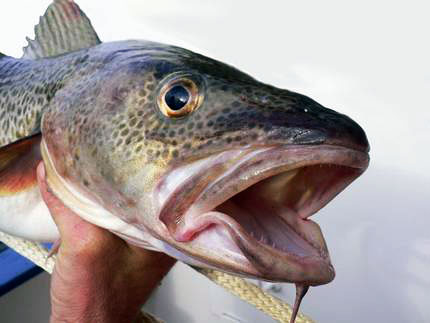Early October, we reconciled the work required on Baltic cod in the next few months with other representatives of Baltic-bordering states (scientists, fishers, and NGO members) at the ICES WKSIBCA in Gdynia, Poland.
For eastern Baltic cod, ICES was unable this year to conduct an analytical assessment and to present a numerical forecast. The catch advice was therefore based on the development of survey catches, and recommended a reduction of catch by 20% (or of 50% compared to the 2014 TAC, respectively). The EU fishery council on Dec 14th did not follow this recommendation and reduced the TAC by 22%; this will however include formerly discarded catch, as the EU landing obligation enters into force in the Baltic cod fishery in Jan. 2015. The resulting catch exceeds this year’s landings significantly, and will therefore most likely not limit the fishery. With the present uncertainties on situation and development of the stock, the deviation of the TAC from the scientific advice is probably not problematic, as long as fishing pressure is not allowed to increase. WKSIBCA developed a detailed plan how to resolve uncertainties until the assessment in spring 2015, when a follow-up expert group meets in Rostock to “benchmark” the two Baltic cod stocks. The plan is, however, very ambitious and the process might take longer than half a year.
ICES also recommended a significant reduction of catches for the western Baltic cod, which is more important for the German fishery. This advice however resulted from a formality: ICES decided not to use the implemented management plan any longer, as there was an important uncertainty in the formulation of the plan obtained. IN the absence of alternative approaches, ICES had to advise to reach the MSY-target (Fmsy) in the shortest possible time frame. This would only be possible with a 48% reduction of catch compared to 2014. Science has also communicated that the western cod is in the phase of recovery, and that a reduction of TACs of 9% would allow a management in agreement with the long-term targets of the management plan, and be consistent with the TAC setting of the previous year. The EU council has however decided to reduced the TAC by only 6.7%, and at the same time declared that the Fmsy target will be reached in 2016. This is considered a risky approach as TACs for 2016 would then have to be reduced much more.

![[Translate to English:] [Translate to English:]](/media/_processed_/d/7/csm_Startseite-OF_03_c0dfd6e750.png)
![[Translate to English:] [Translate to English:]](/media/_processed_/a/3/csm_20181116-151457-Stella-Jerome-Fischfalle-Warnem%C3%BCnde-Dorsche-im-Netzk%C3%A4fig-5691_heller_3050c72fa2.png)






